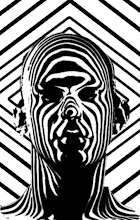In "The Critic as Artist," renowned playwright Oscar Wilde presents arguments, in the form of a discussion, that the Critic plays both a highly creative and interpretive role in society.
As Gilbert, Wilde attempts to prove to his companion Ernest that the Critical faculty and the Creative faculty are one and the same. Wilde argues that, like a painter or a novelist, a Critic "works with materials, and puts them into a form that is at once new and delightful." He then goes on to give the compelling theories that people who give their personal performances of material are not performers but in fact critics of the work they present; an actor is not a performer of his character but rather its critic, a musician is not a performer of his music, but rather its critic. Wilde's main theory is that the beauty art is truly within the eye of the beholder, and contends that the Critic is able to, by examining, analyzing, and giving his personal thoughts of a work of art, the Critic is able to transcend it by applying it to realms of thought the artist themselves could never have thought of in a method wonderful and descriptive.
During the second part of Gilbert and Ernest's discussion, Wilde states his theories about the Critic also acting as an interpreter, contradicting his previous views that true artistic Criticism should be entirely subjective; however, he downplays the importance of this role of Criticism.
Wilde's virtuosity as a writer and intellectual shines brilliantely even through the more mundane passages of his sound and elegant logic. Idea for idea, this was a brilliant piece of work.
Subscribe to:
Post Comments (Atom)

No comments:
Post a Comment